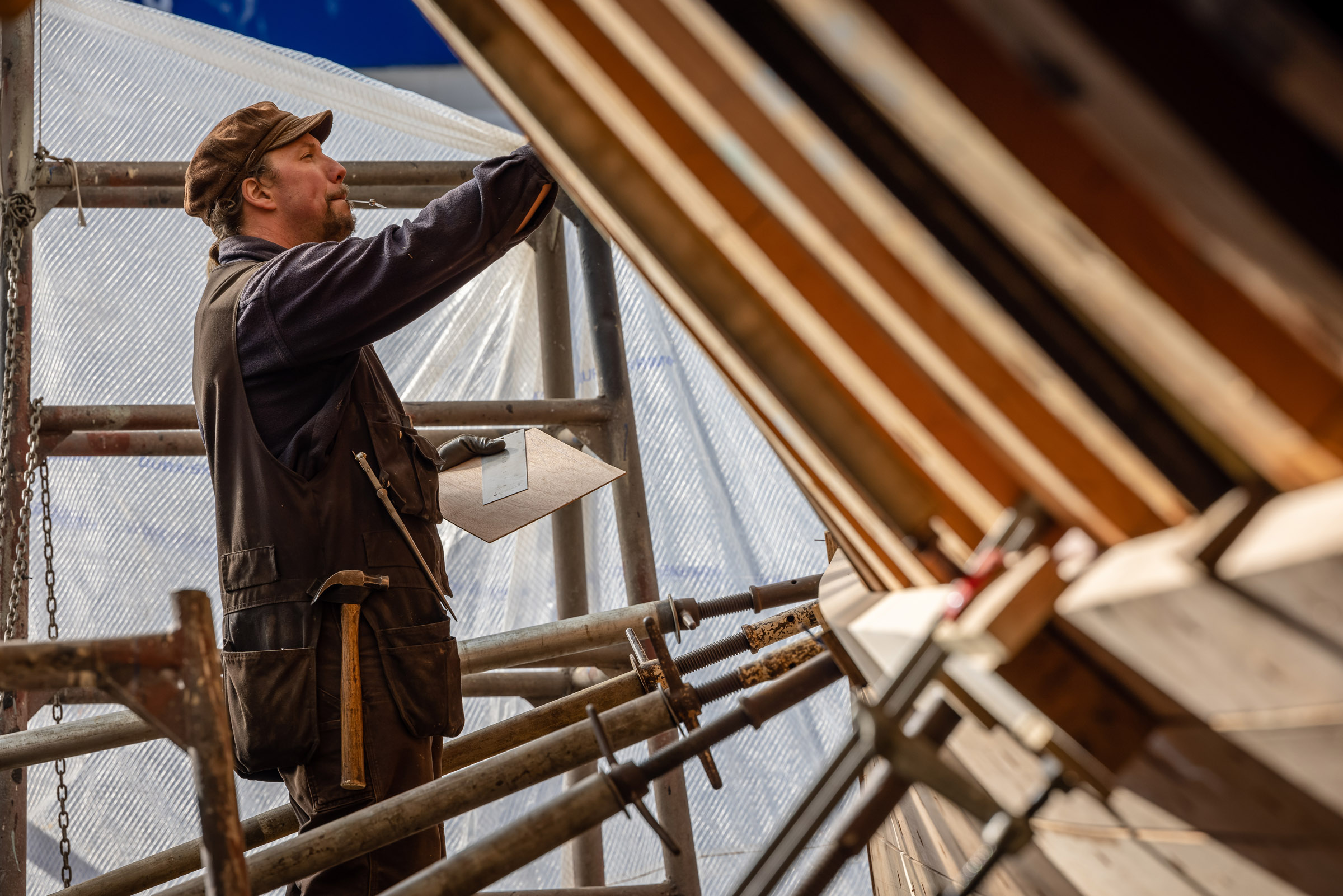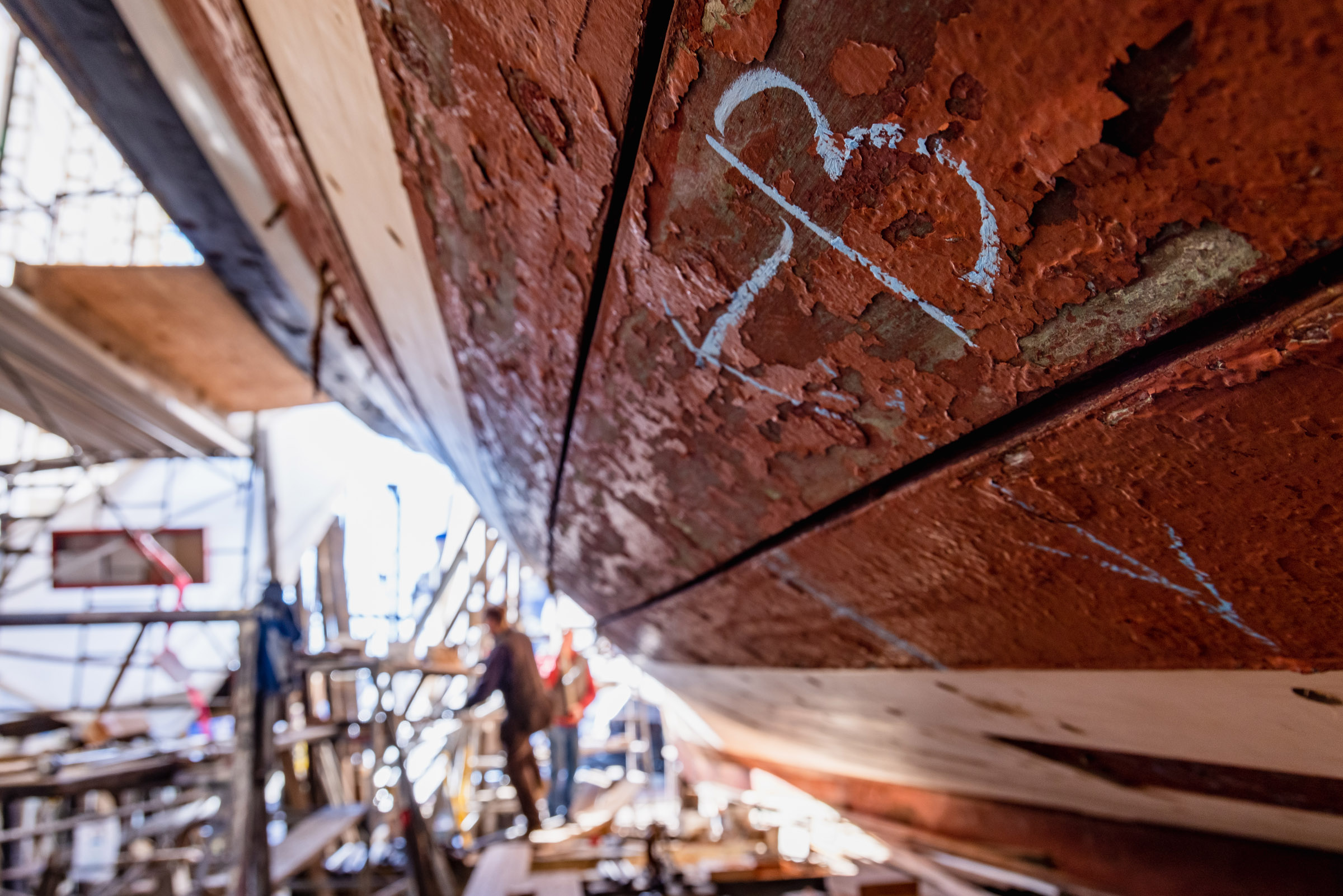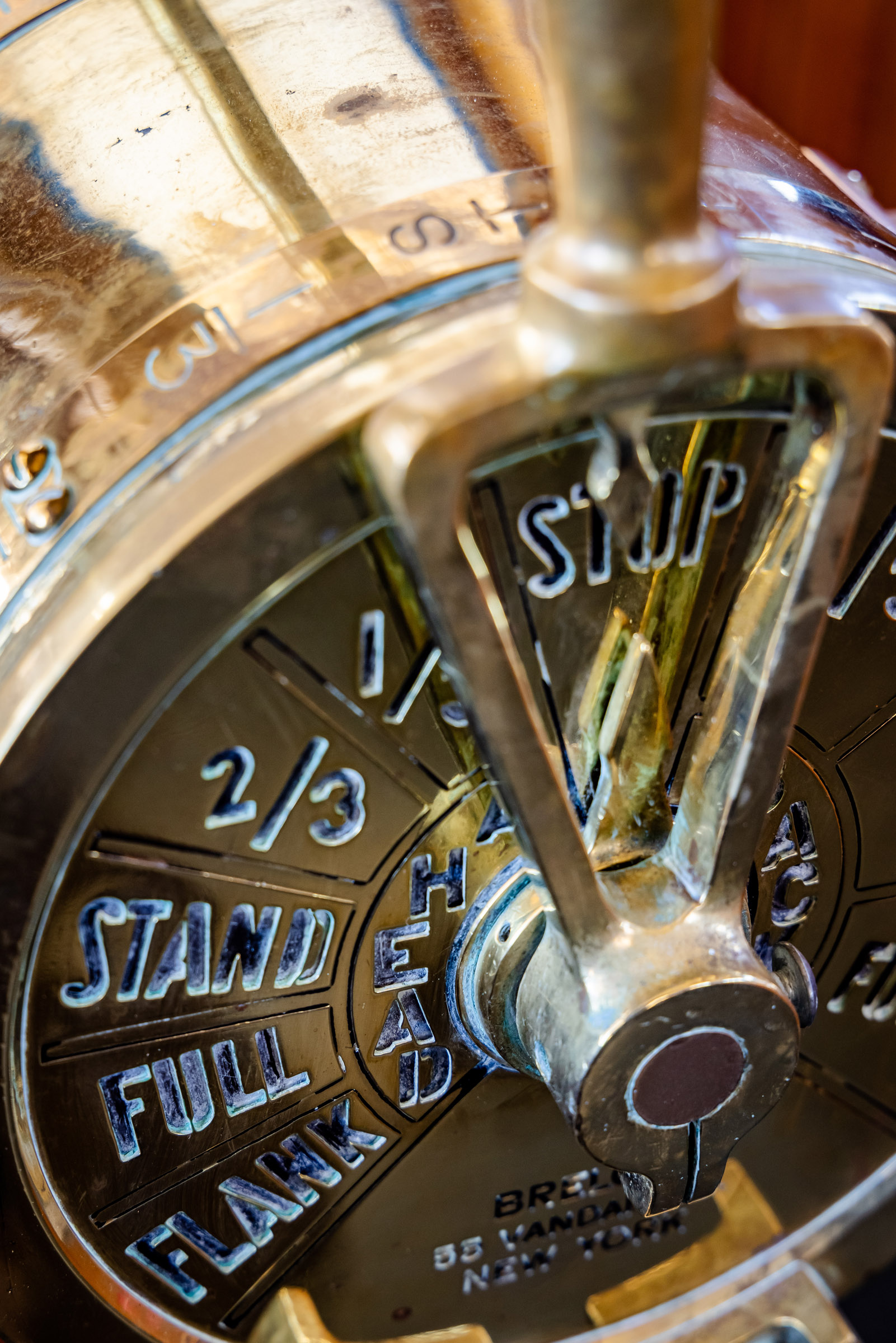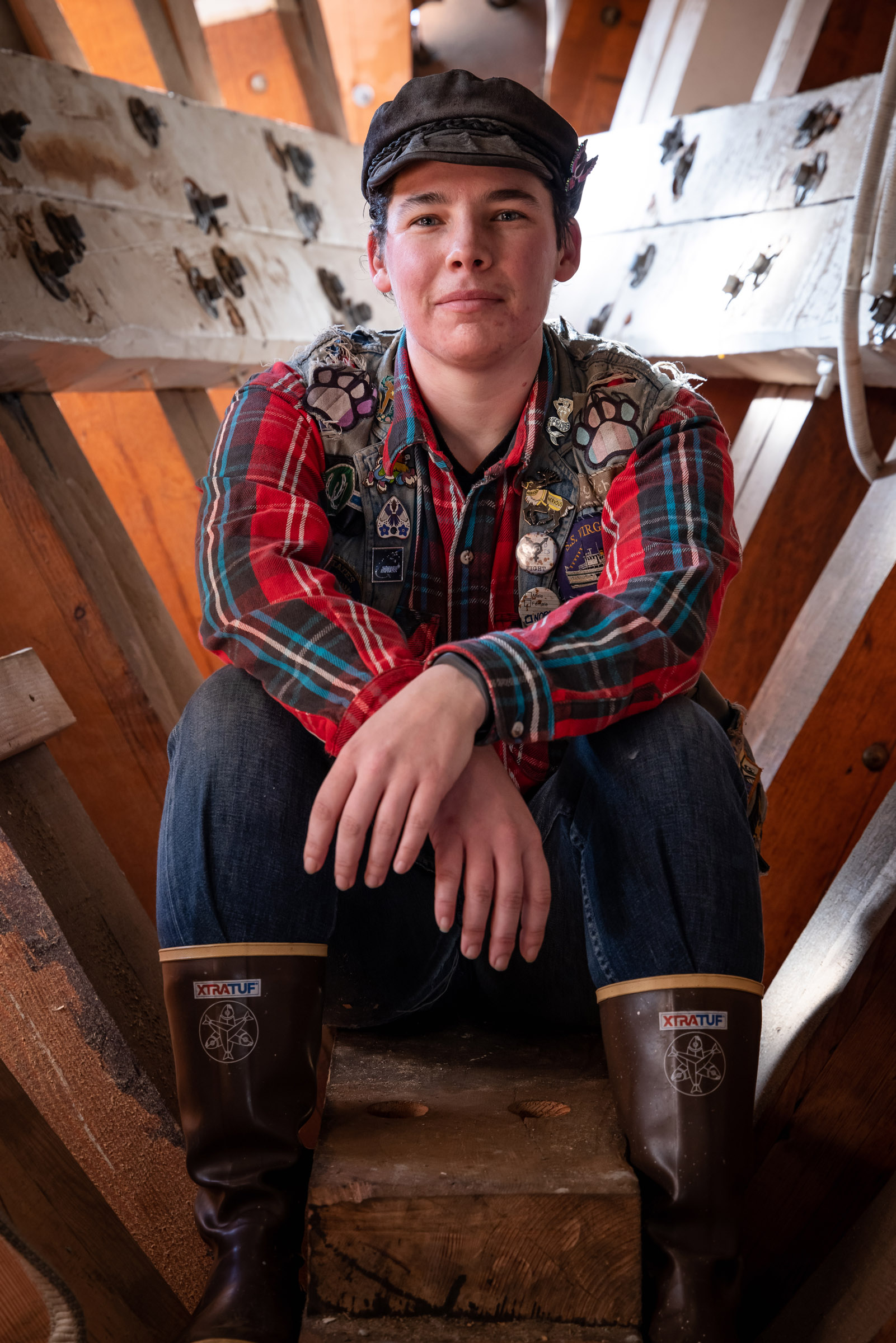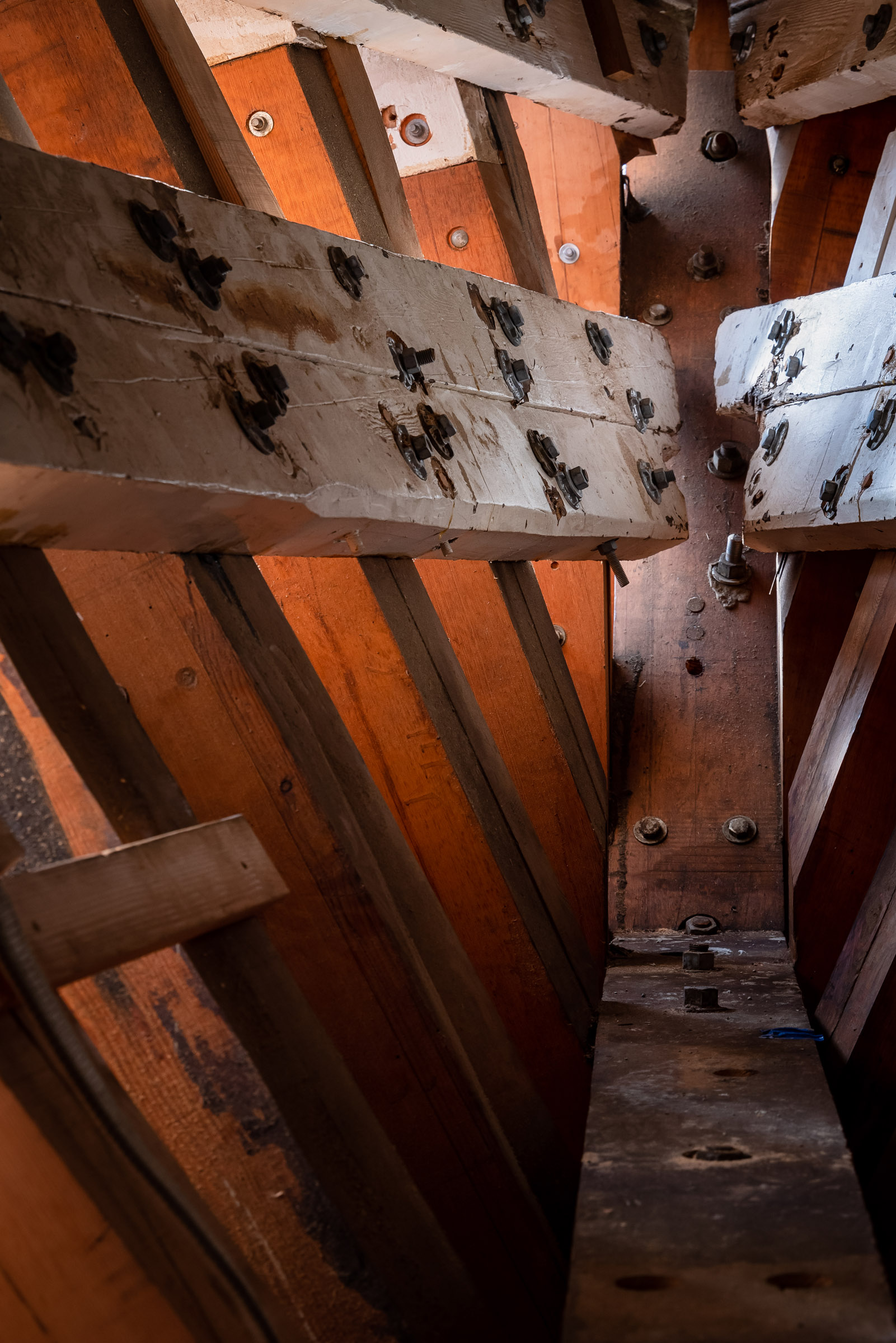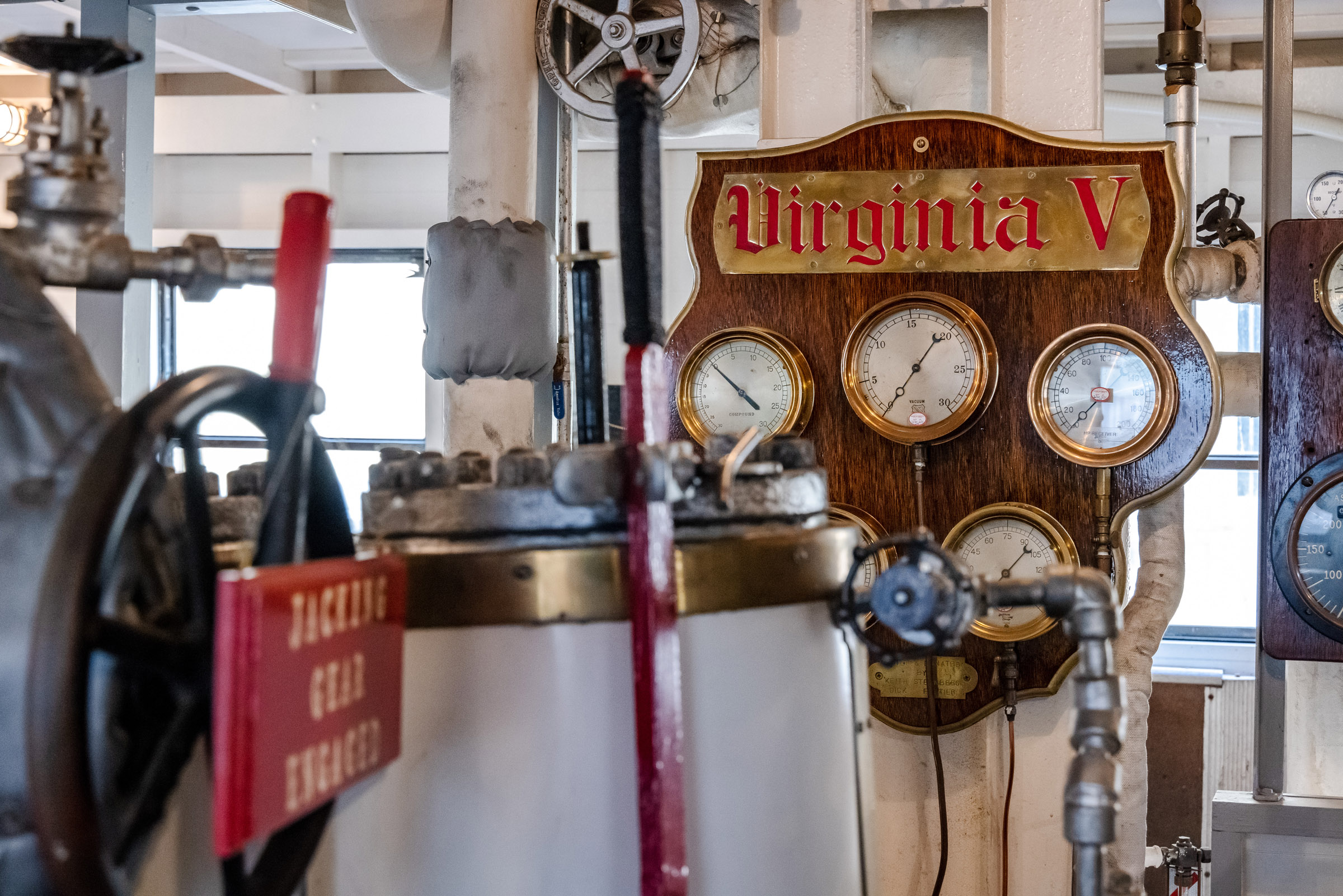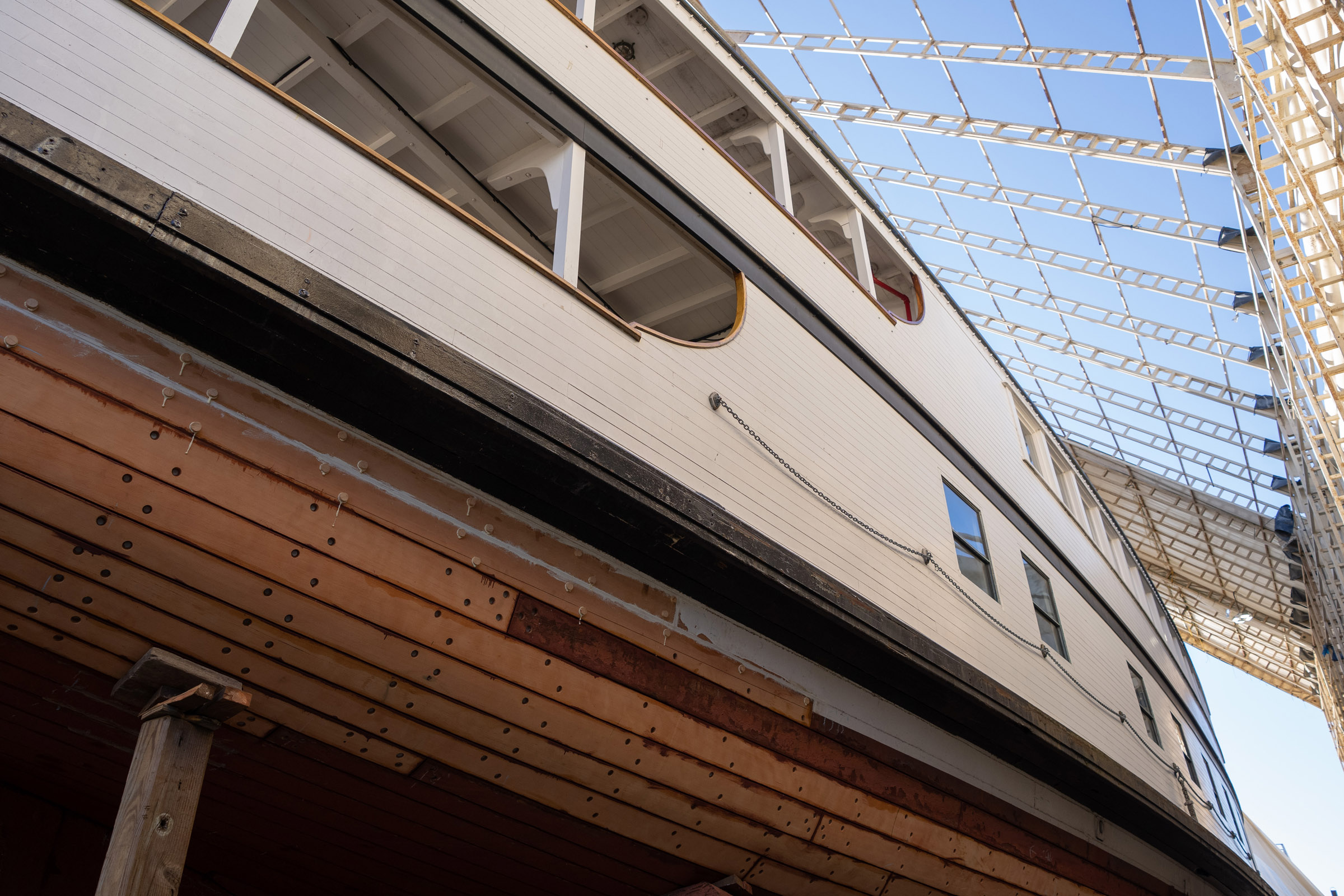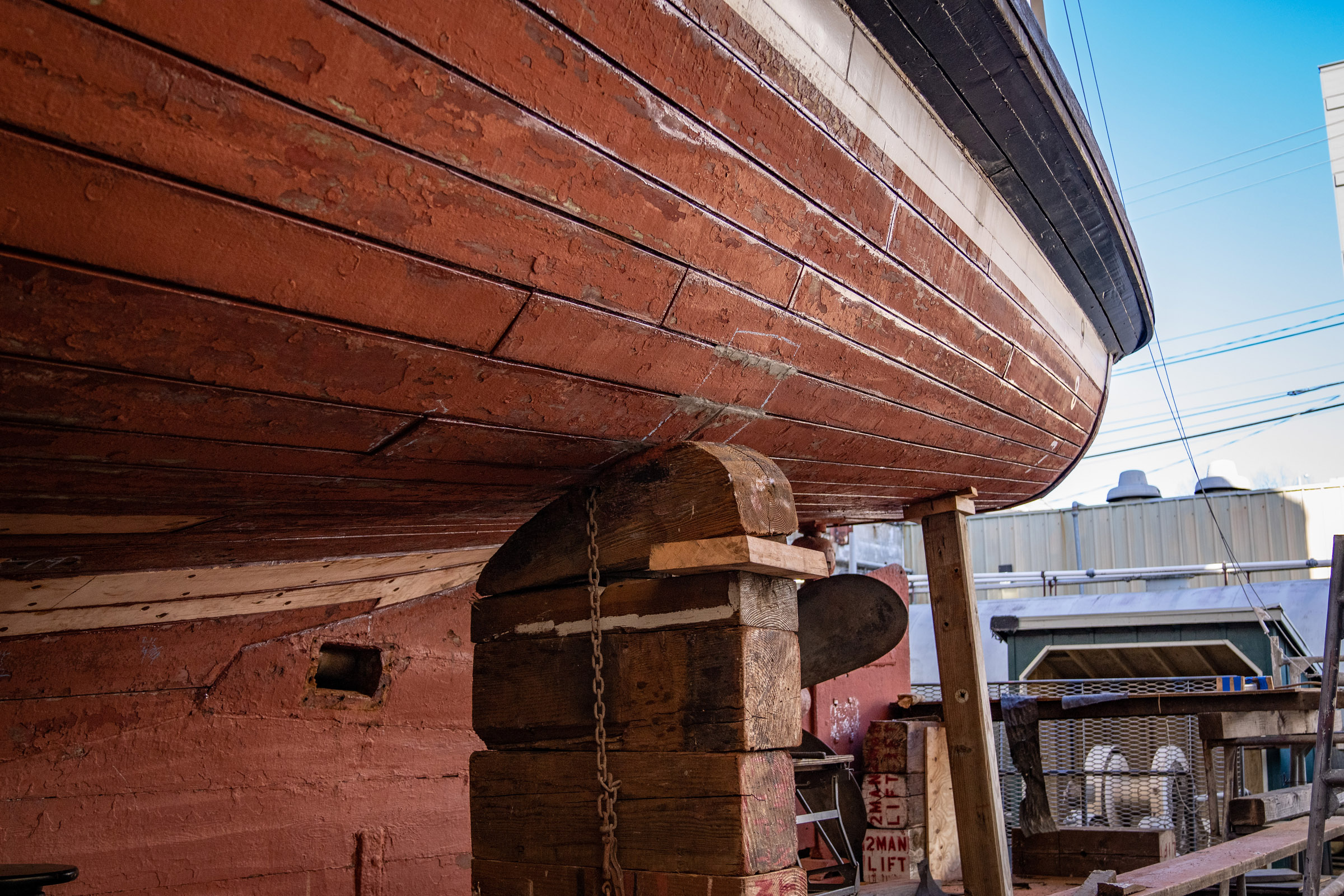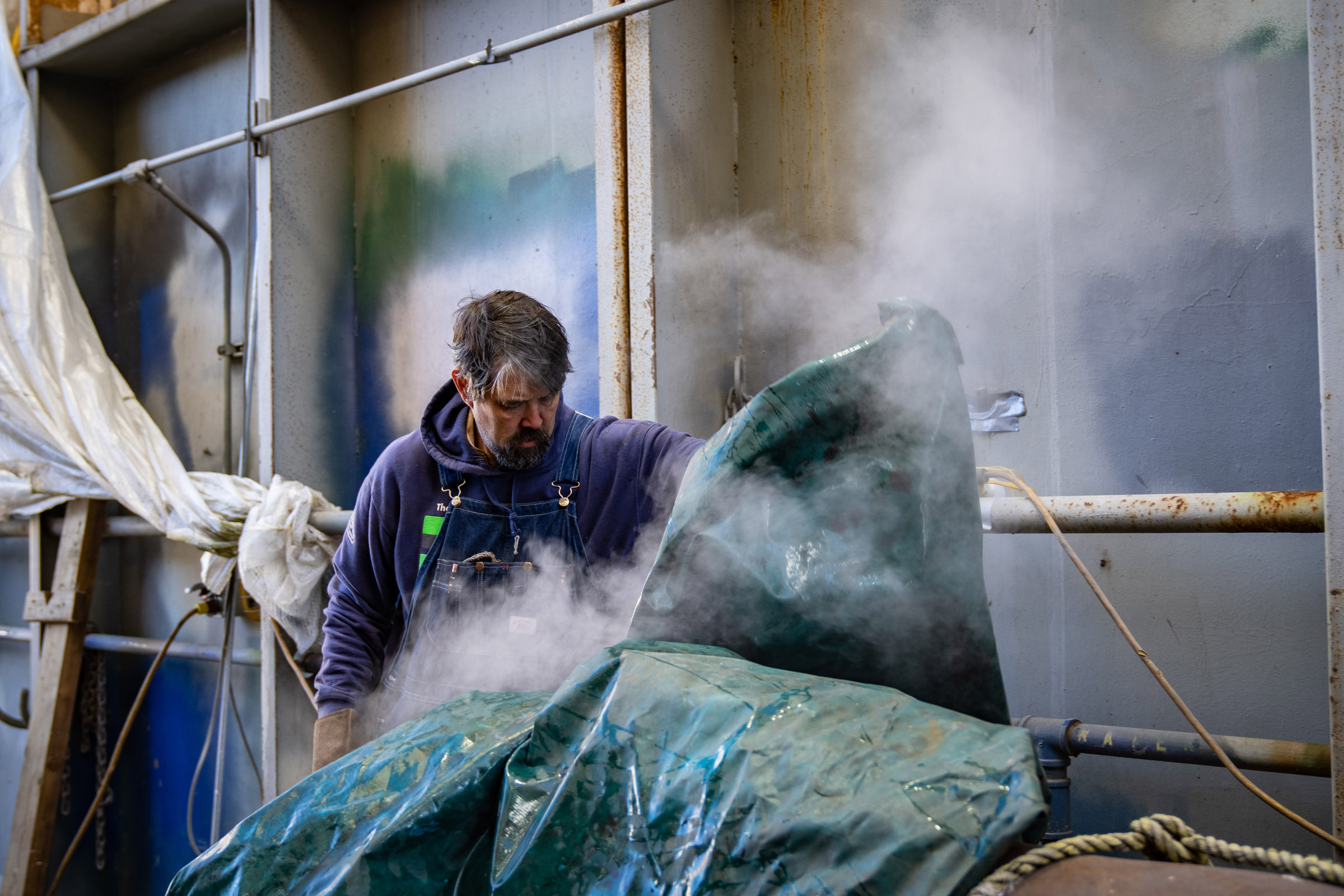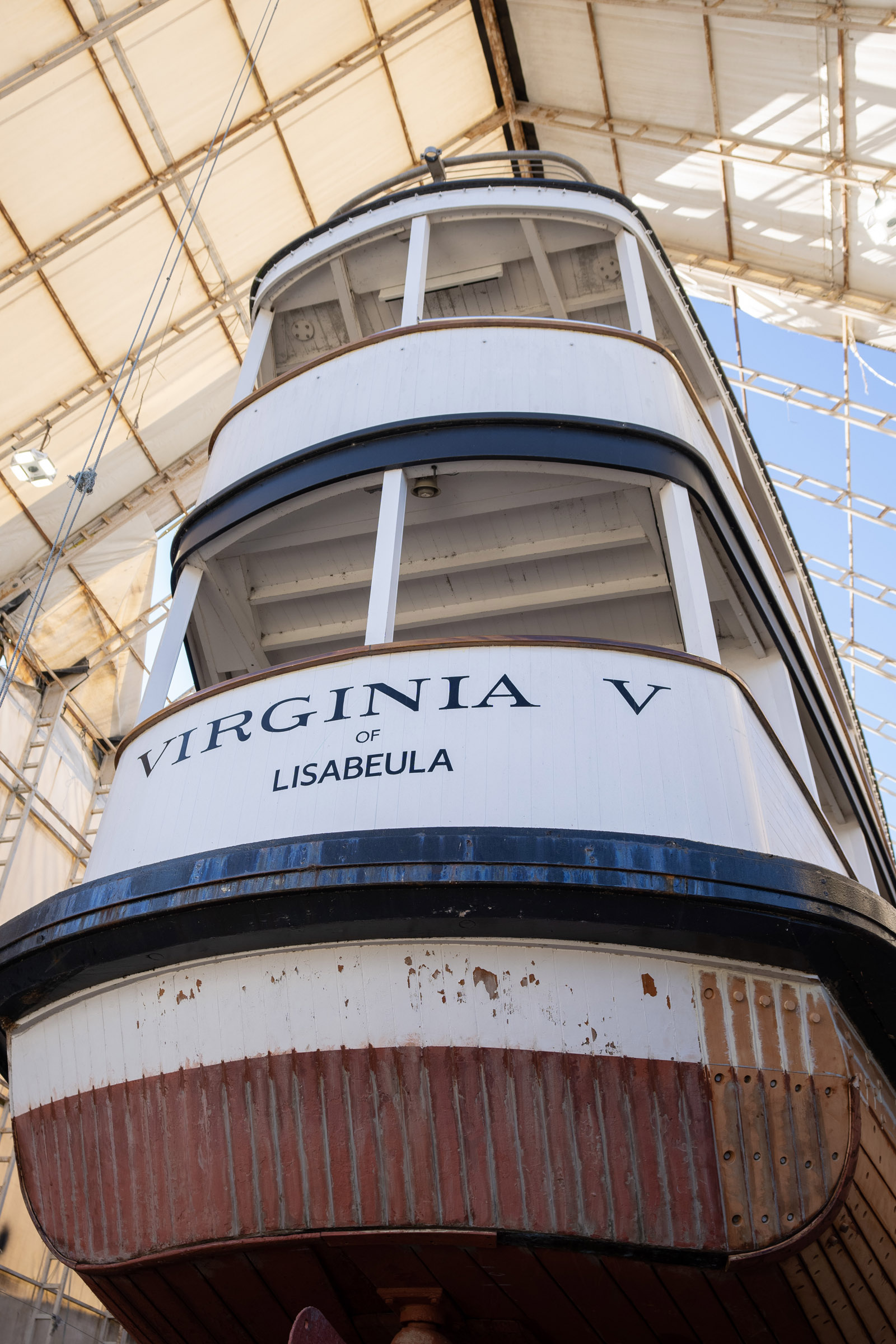Photos by Thor & Carrie Radford
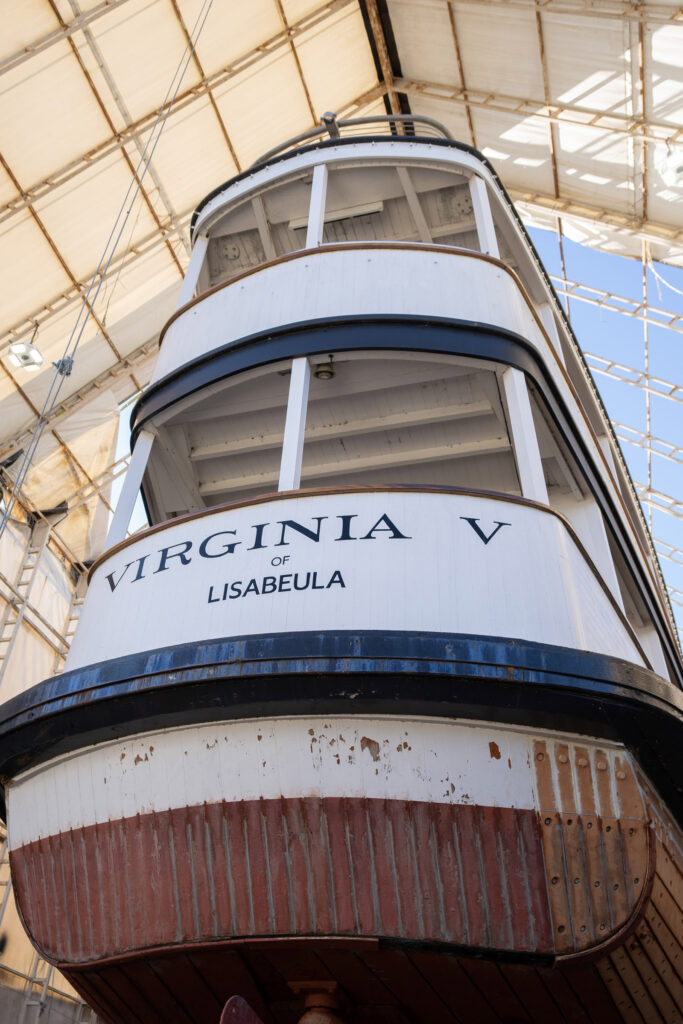
Passenger ferry. Cargo conveyer. Mail carrier. Military transport. Events venue. Excursion vessel. National Historic Landmark. Puget Sound lodestar.
This vast and varied resume belongs to one vessel and one vessel alone: The SS Virginia V. The last remaining steamship from the historic “Mosquito Fleet” of ferries that once traversed the Puget Sound and still a frequent sight on Northwest waters, the beloved wooden ship has spent more than a year out of those waters at Pacific Fisherman Shipyard in Ballard. There, she has undergone restorations that have prepared her for the next role—that of a centenarian as she marks the 100th anniversary of her June 11, 1922 maiden voyage next month.
“She’s tenacious,” states Ed Brown, senior docent at the Virginia V Foundation and the resident ship historian. “She’s been seized by the Federal Marshals twice. She’s been sold at auction. It’s been constant work to find her a job. The ship has had so many owners and careers that really, it’s a miracle that she’s made it all the way here to us today.”
But made it she has, thanks to a herculean effort by a consortium of local shipyards, expert boatwrights, and the passionate crew behind her caretaking foundation.
This most recent work is certainly not her first—that was way back in 1934. The steamship was damaged in a wind storm while attempting to dock in Olalla, Washington, and the upper decks were nearly destroyed. The decision to even bother fixing her after the incident was monumental, explains foundation board secretary Doug Weeks, who has been involved with the foundation for over two and a half decades and even met his wife on board. “These boats weren’t really built to last traditionally, maybe 25 years. When they would get old and out of shape, they used to just run them up on the beach and burn them.” Brown concurs; “I think we are eternally lucky that they decided to rebuild it in ‘34. That rebuild then set the stage for the many rebuilds that followed.” In the more modern age, beginning in 1995, the Foundation undertook a six-year, $6.5 million stem-to-stern restoration; that project included rebuilding the original steam engine, building a new boiler, and reconstruction of the ship’s superstructure.
When Virginia V was hauled out for this particular project in February of 2021, the original plan was to work on an area of fungus-related rot in the port bow area of the ship. But once it was out of the water, it was discovered that the rot was more widespread than initially thought and significant portions of the ship’s framing and planking would need to be replaced.
Thus began an almost 15-month-long journey.
On the business end, King County, The M.J. Murdock Charitable Trust, 4Culture, The Norcliffe Foundation, The Goodfellow Fund, The Beardsley Family Foundation, and many individuals all responded to the call for help with donations. The Foundation also received federal funds from the National Maritime Heritage grant program, which is administered by the National Park Service. (There will still be a sizeable gap between funds raised to date and the total cost of the restoration work; donations are welcome via the Foundation’s website.) On the technical side, the shipwrights at Pacific Fishermen Shipyard immediately went to work removing and replacing fungus-infected frames, knee, stem, and planking, a process that can only be described as a labor of love.
First, the “new” planks installed by PacFish are anything but new. All milled from old-growth Douglas fir to match the historic wood elsewhere on the ship, they were sourced from small mills throughout the region, from Oregon to the Olympic Peninsula. All told, 57 planks were replaced on the starboard side and 39 on the port side of the ship. The planks, which measure up 40 feet long, were each individually prepared to exacting measurements in the shipyard’s wood shop, then steamed for two hours to soften the wood. When ready, the shipwrights removed the plank and quickly set it in place with metal braces so it could bend into the curved shape of the hull. After the planks were fastened to the ship, other experts applied their old-world skills to “corking” the seams to seal the space between the planks to make her hull watertight. This process involves hand preparing the “oakum” (hemp fiber) into thin strands which are then pounded into the spaces between the planks. A layer of cement is later applied in the seams.
“It’s all very organic and frankly, awe-inspiring,” says Weeks of the Virginia V Foundation, describing the wood details of the ship. “She’s not plastic, not metal, she’s crafted from the earth.”
Foundation members and volunteers also pitched in on a bevy of necessary maintenance-related tasks and other projects while Virginia V was in dry dock to help keep her plying the waters in the years to come—an example of just how many care, and care deeply, for the historic steamship and her fate.
Docent Brown describes Virginia V as their second home. “This is where I found my calling in life,” Brown says. “I love helping people learn history when they come aboard.” And to hear Weeks describe the antique steam engine is the stuff of poetry: “Her heart is the engine, and when you look into that boiler, it’s like seeing her heart beat. The rods are exposed, you can see all the inner workings in a way you never could in a modern boat engine. You feel it, you hear it, that steam engine gives you a sense of a living, breathing thing.”
The final “whiskey plank” was installed on the port bow of the ship on March 28, a milestone well worth marking with a traditional celebratory toast after over a year’s worth of restoration work. During the remaining spring months, the shipyard team is continuing the process of corking the seams, painting the hull, and replacing underwater through-hull fittings. Finally, tests and inspections required by the Coast Guard will be conducted and then the engineering crew will ready the ship for operation. The Foundation plans to have her sailing again come summer, the all-volunteer crew welcoming visitors back dockside and on board via several sailings and celebratory events. Mark the calendar for July 15th when Virginia V is set to steam from Seattle to Tacoma, passing by Vashon Island in a re-creation of one her West Pass ferry routes back in the day.
That July cruise is sure to be a full circle moment for the devotees who have steered her through the past two years. “If we were to lose the boat, we’d lose her connection to all that local history and the knowledge she contains in her stories,” says Weeks. “It’s why she’s so important to preserve, that tie to the past is so incredibly valuable.”
And Foundation Executive Director Debra Aldermanthinks that, with a little luck and a lot of effort, Virginia V may just continue to inspire and delight people for yet another hundred years. “We are just caretakers,” she concludes. “We are proud to contribute what we can to her legacy during our era and then pass her on to the next generation.”
>> For the latest updates on the plans for celebrating Virginia V’s centennial, plus information on how to volunteer your time, or to donate to her restoration and preservation, go to: virginiav.org.
